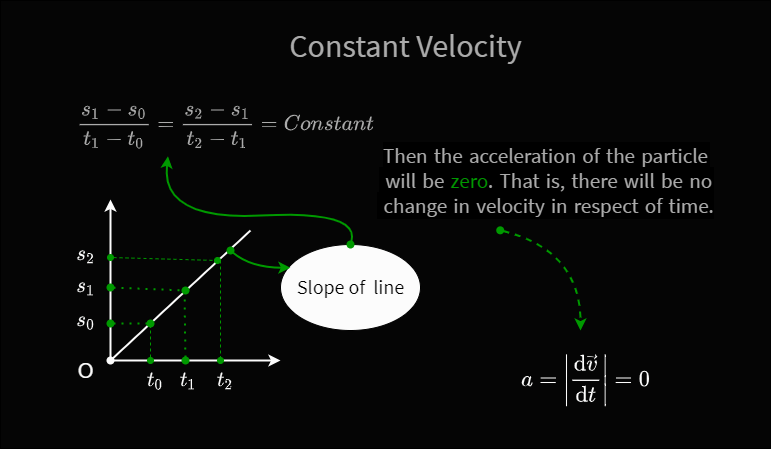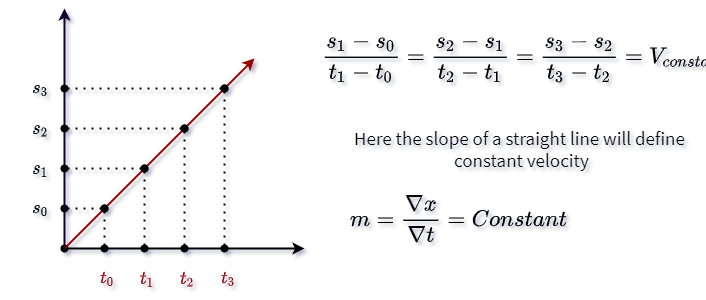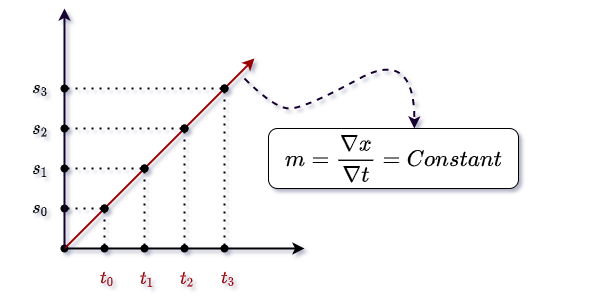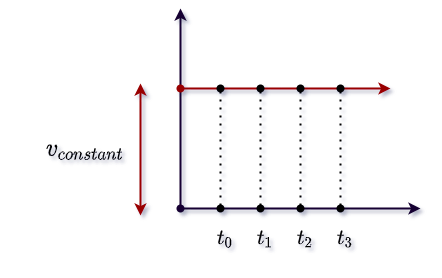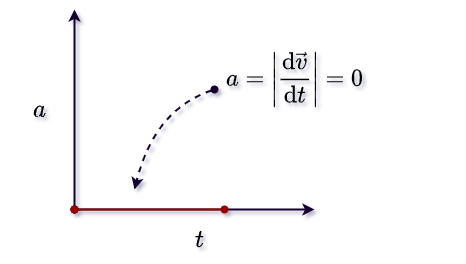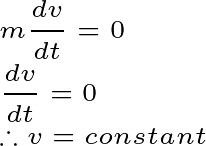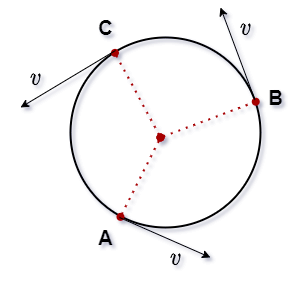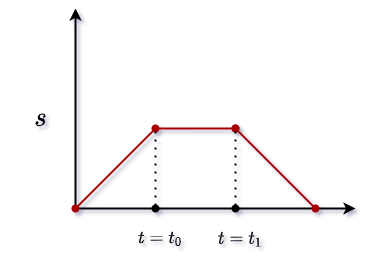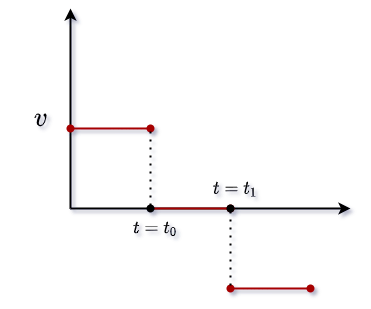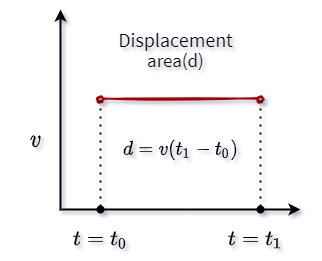When you read mechanics, you will hear the words “uniform velocity” or “constant velocity“.
These two words mean the same thing. That is, constant velocity is called uniform velocity. There are many concepts of mechanics hidden in this Uniform Velocity word. So, in this tutorial, we will discuss in depth about constant-velocity through graphical representation.
Before discussing in detail you need to understand when a vector quantity is constant because velocity is a vector quantity.
How is the vector constant?
When you use a scalar as a constant. In that case, only the value of the scalar quantity needs to be kept unchanged over time.
For example, your room temperature is 30 °C and you notice that as time increases, your room temperature stays at 30 °C. Then you can say that your room temperature is constant.
But, vector quantity has both value and direction. Thus, if the vector is to be constant, the direction must remain unchanged with the value. That is, the value of the vector will not only be constant over time but also the direction of the vector will remain unchanged.
Suppose a particle is moving along the x-axis with a velocity of 30 m/s. And you notice that after the specified time the particle continues to move along the x-axis at the same speed. In this case, both the value and the direction of velocity are constant even after the particle has crossed the specified path. Then we can say that the particle is moving with constant velocity.
Suppose the particle of the above problem started moving along the y-axis with the same velocity after a certain time without going along the x-axis. In this case, the direction of the particle’s velocity will change after crossing the specified path. Then the velocity of the particle will not be constant after the specified time.
Constant Velocity
Constant velocity is the velocity that a particle acquires as a result of a particle crossing an equal linear path at certain time intervals.
Also, you can say that the constant speed of a particle along the same straight line is uniform velocity.
That is, the particle will travel an equal linear path at equal time intervals. So, look at this figure below
That is, the slope of the migration-time graph represents the uniform velocity.
Graphical Representative of Constant Velocity
Here we will discuss three types of graph in respect of time
1. Displacement vs time graph
This graph has been discussed before. And displacement will increase at an equal rate in respect of time. However, the slope constant will remain.
2. Velocity vs time graph
The value of velocity will not change with respect to time. So look at this graph below as time moves forward but the velocity remains the same.
3. Acceleration vs time graph
Here since velocity is constant. Then the acceleration of the particle will be zero. That is, there will be no change in velocity in respect of time.
Uniform velocity from Newton’s Laws
“Why does an object move in uniform velocity?” To understand that, you need to understand Newton’s formulas analytically and mathematically. Where the Applied Force has been discussed in depth.
Primarily, the concept of uniform-velocity comes from force.
1.Newton’s First Law
You probably all know the concept of Newton’s first law. Where Uniform Velocity is discussed. Newton’s first formula describes two physical states of an object.
- Moving Object
- Stationary Object
We will discuss the dynamic state of the object here. And you see how an object moves in constant velocity?
According to Newton’s first law, if the total external applied force on a moving object is zero, then the moving object will move at constant velocity forever and the stationary object will be fixed forever.
If the total external applied force on a moving object is zero then the object will move in uniform velocity. To prove this concept mathematically you need to take the help of Newton’s second law. Where the definition of force is given.
2.Newton’s Second Law
You all know that according to Newton’s second law there will be total applied force on an object
And here the mass of the object is taken as constant. Suppose, if the total external force on the object is zero. Then
Finally, we can say that if the applied total external force on a moving object is zero then the object will move in uniform-velocity.
Questions and Answers on Uniform velocity
Below is a discussion on some questions and answers on uniform velocity.
Problem1 Notice in this figure below, here a particle is moving in a circular path with constant speed. In this case, will the velocity of the particle be constant?
No, the value of velocity may be constant but the direction of velocity will be different at each point. Here the direction of velocity at each point will be along the tangent.
Thus, even if a particle moves with constant speed in a circular path, it will not move with uniform-velocity.
Problem2 Below is a position-time graph. And draw a graph of velocity-time by looking at the graph of this position-time.
If you look closely at the graph of position-time, you will notice that first the particle moves with uniform velocity, then the velocity of the particle becomes zero and again the second time the particle moves with negative uniform velocity.
Problem3 How do you calculate total displacement with a graph of uniform velocity and time?
When a particle moves at constant velocity, the displacement of the particle is equal to the product of constant velocity and time interval. If you find the area between the graphs of velocity and time, it will be equal to the total displacement of the particle.
Thus, the area between constant velocity and time graph always represents the displacement. Notice in the figure above that a particle has traveled from time a to time b with constant velocity v. And if the displacement of the particle is d
Problem4 When can you treat Uniform Speed as Uniform Velocity?
Uniform velocity has an unchanged direction. So, when a particle is moving along a straight line with uniform speed, you can call its speed as uniform-velocity.
Problem5 If a particle moves in uniform velocity, what will be its acceleration?
Acceleration means a change in velocity in respect of time. And since the particle is moving in uniform uniformity, the change in velocity will be zero. Then the acceleration of the particle will be zero.
Also if you do a derivative of a constant the result will always be zero. Then
Conclusion
Here uniform velocity and constant velocity are two of the same words. Many people are very confused about this. Of course, the concept will be clear after this tutorial. And if you have any feedback, let us know in the comment box.
And if this tutorial has added some value to your education life, don’t forget to share this tutorial. As a result, I get motivation to create better tutorials. Thanks, All Physics Lover
